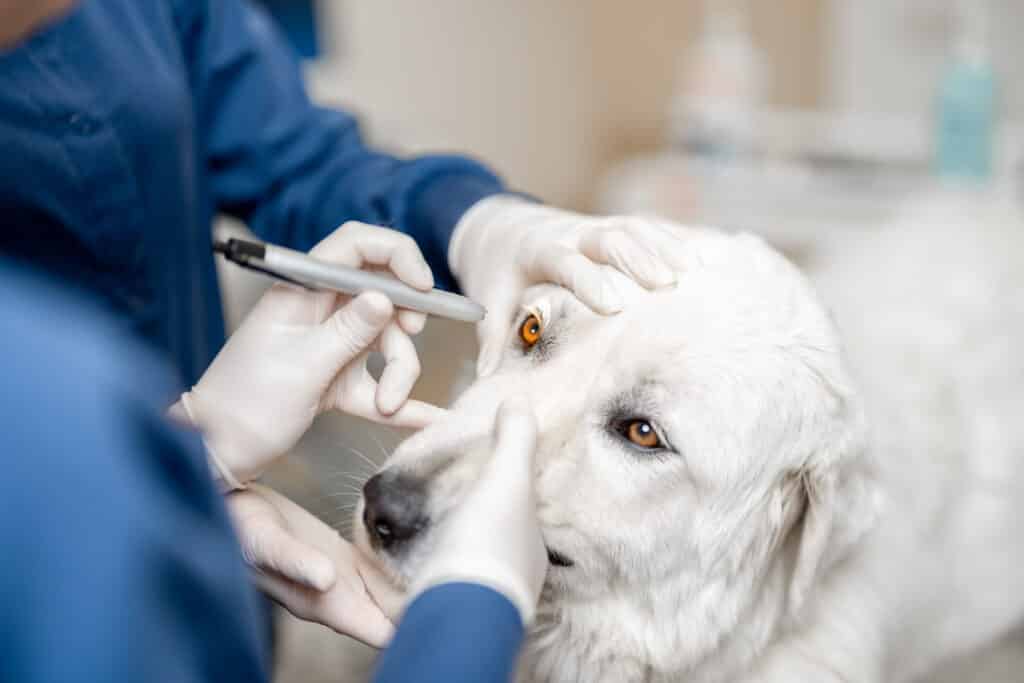
When it comes to taking care of our furry friends, we often focus on their physical well-being, such as feeding them a balanced diet, providing regular exercise, and keeping up with their vaccinations. However, one area that is sometimes overlooked is eye care. Just like humans, dogs can experience various eye problems that can cause discomfort, pain, and even loss of vision if not addressed promptly. That is why it is essential for dog owners to prioritize eye care as part of their pet’s overall health and well-being.
Regular eye examinations are crucial for identifying any potential issues early on. During these examinations, a veterinarian can assess the overall health of the eyes, check for any signs of infection, inflammation, or injury, and provide appropriate treatment, if necessary. This can prevent minor issues from escalating into major problems that could potentially have long-term consequences.
Conjunctivitis
One of the most common eye problems in dogs is conjunctivitis, which is the inflammation of the conjunctiva, a thin, protective membrane covering the front surface of the eye and line the inner surface of the eyelids. Conjunctivitis can be caused by allergies, bacterial or viral infections, foreign bodies, or even anatomical conditions such as entropion or ectropion. Symptoms of conjunctivitis include red or pink eyes, discharge, swelling, and excessive blinking. If left untreated, conjunctivitis can lead to corneal ulcers or scarring, which can affect vision. Therefore, it is crucial to seek veterinary care at the first sign of conjunctivitis to prevent any complications.
Dry Eye
Another common eye problem in dogs is dry eye, also known as keratoconjunctivitis sicca (KCS). Dry eye occurs when there is a decrease in tear production, resulting in a lack of moisture and lubrication on the surface of the eye. It can be caused by various factors, such as certain medications, autoimmune disorders, or damage to the tear glands. Without proper lubrication, the cornea can become dry, inflamed, and prone to infection. Symptoms of dry eye include redness, discharge, excessive blinking, squinting, and frequent pawing at the eyes. Veterinary treatment for dry eye usually involves the use of artificial tear solutions or ointments to provide moisture and lubrication to the eyes.
Cataracts
Cataracts are another common eye condition in dogs, particularly in older dogs. Cataracts cause the normally clear lens of the eye to become cloudy, resulting in reduced vision or even blindness. Cataracts can be caused by genetics, diabetes, nutritional imbalances, or trauma to the eye. Symptoms of cataracts include cloudy or opaque pupils, difficulty seeing in low light, or bumping into objects. Cataracts can be surgically removed, and early detection and treatment offer a higher chance of successful outcomes. Regular eye examinations can help identify cataracts early on, allowing for timely intervention.
Other Eye Issues
Apart from these common eye problems, dogs can also experience other issues such as corneal ulcers, glaucoma, retinal diseases, or even eye tumors. Prompt veterinary care is crucial in diagnosing these conditions and providing appropriate treatment to manage their progression. Ignoring or delaying treatment can lead to irreversible damage or vision loss.
Moreover, eye care extends beyond veterinary visits. As responsible pet owners, there are several steps we can take to ensure our dog’s eyes remain healthy and free from infections and other issues.
Here are some simple but effective tips for maintaining good eye care for your furry friend:
1. Regularly inspect your dog’s eyes:
Take a few minutes every week to examine your dog’s eyes. Look for any signs of redness, discharge, cloudiness, or changes in the size or shape of the pupils. If you notice anything unusual, contact your veterinarian immediately.
2. Clean your dog’s eyes gently:
Use a soft, damp cloth or a sterile saline solution specifically designed for eye cleaning to carefully wipe away any dirt, debris, or discharge that might accumulate around your dog’s eyes. Avoid using harsh chemicals or human eye products, as they can be harmful to dogs.
3. Keep hair around the eyes trimmed:
If your dog has long hair around its eyes, make sure to keep it trimmed. Long hair can irritate the eyes, and loose hairs can get into the eyes and cause irritation or infections. Regular grooming can help prevent these issues.
4. Protect your dog’s eyes:
When taking your dog for a walk, protecting their eyes from dust, debris, or strong wind is essential. You can use dog goggles or keep your dog away from areas with high levels of dust or strong wind.
5. Be mindful of potential hazards:
Dogs can be curious and can easily get into trouble. Be aware of potential hazards that can harm their eyes, such as sharp objects, chemical cleaners, or plants with thorns. Keep harmful substances out of their reach and provide a safe environment for them to explore.
In conclusion, eye care is a vital aspect of maintaining the overall health and well-being of our furry friends. Regular eye examinations, dog grooming, prompt veterinary care, and practicing good eye care habits at home can help prevent or manage various eye conditions in dogs. By prioritizing eye care, we can ensure that our beloved pets have healthy, happy, and clear vision throughout their lives. So, don’t overlook your dog’s eyes – they deserve the same care and attention as any other part of their body!



